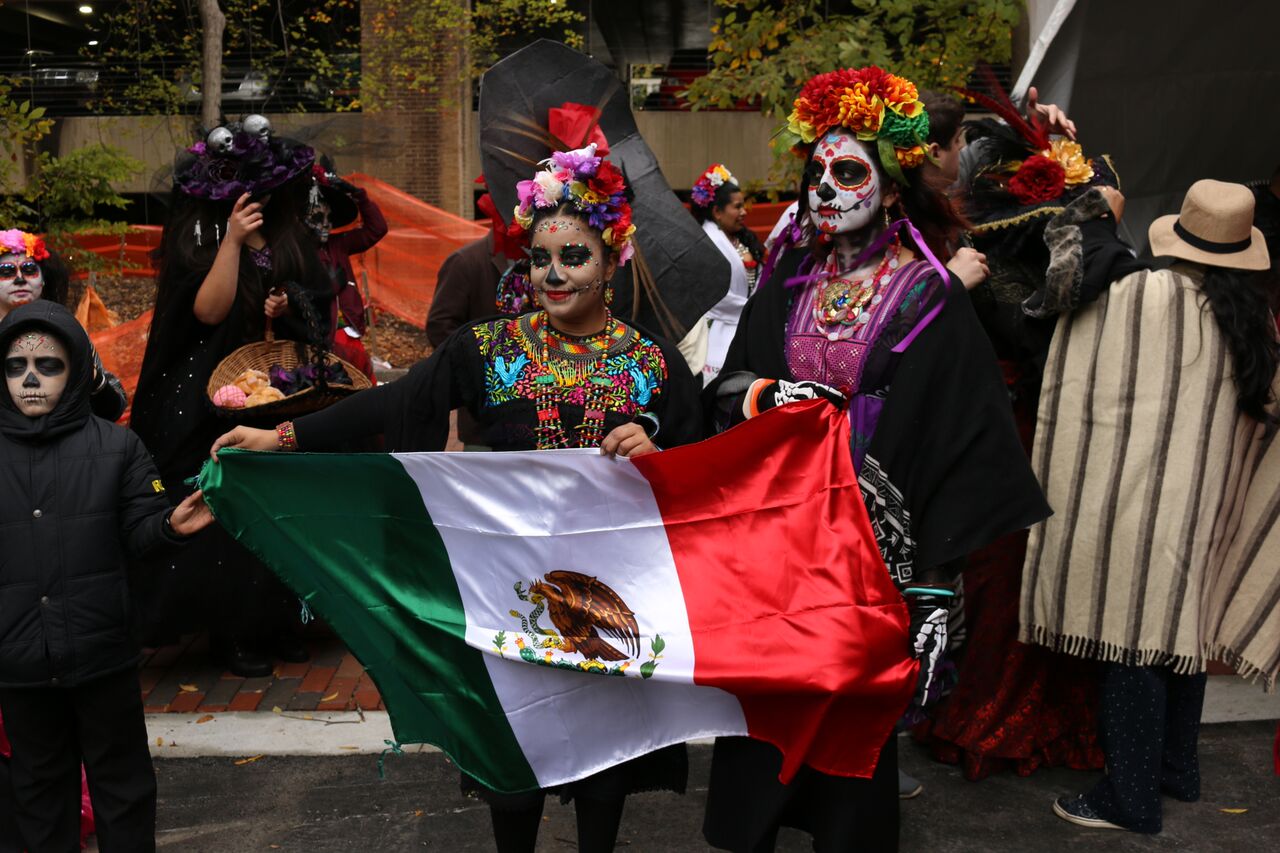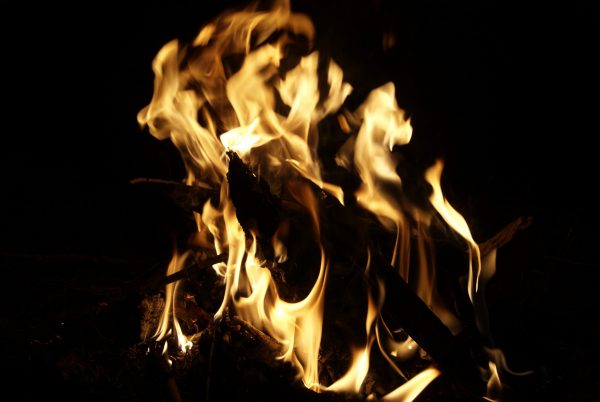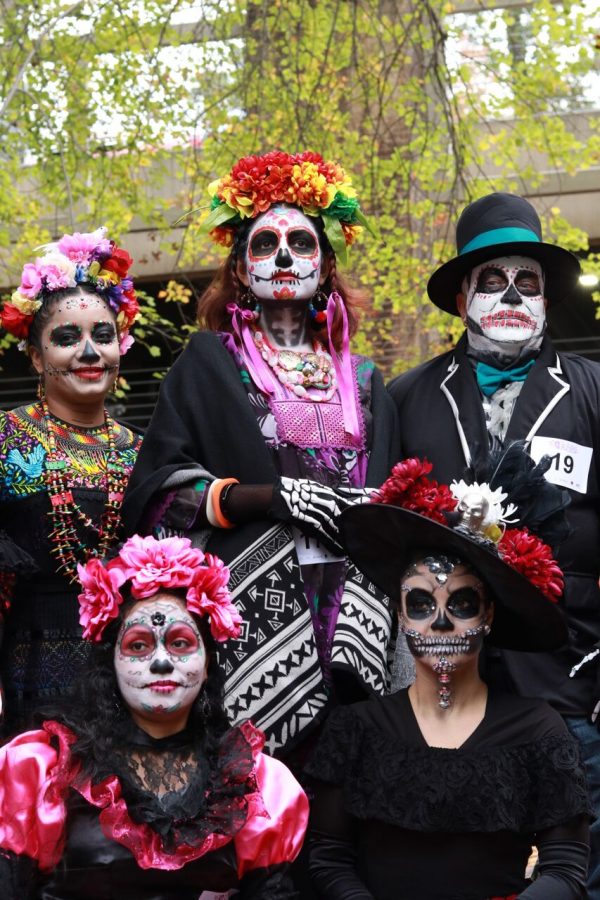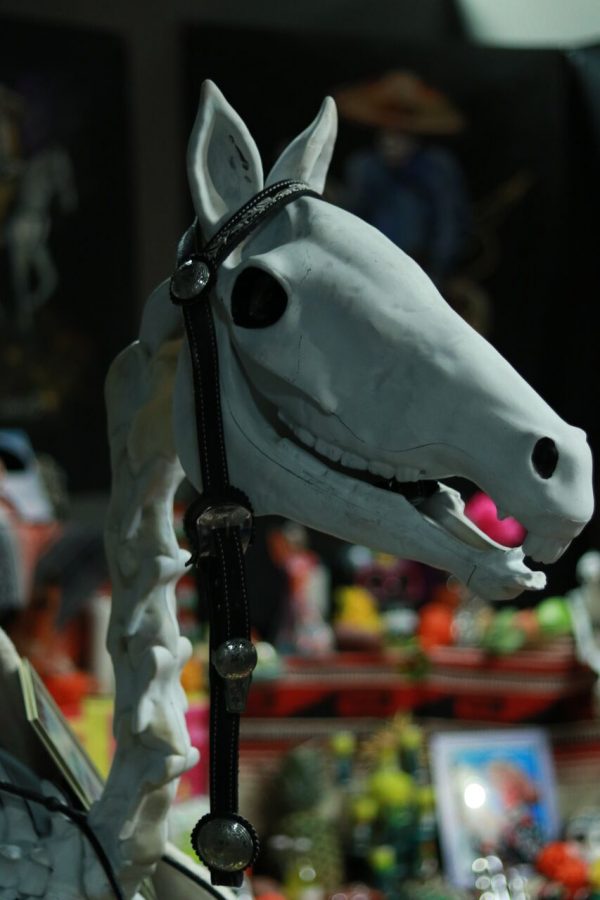
Jack-o-lanterns, candy and scary movie marathons. These are just the basics of what Halloween looks like in America. As you step out this Halloween in your best Pennywise the Clown costume, different cultures may be preparing for long awaited reunions with their ancestors.
There are many “days of the dead” celebrated around the world that are a bit more sacred to other cultures than our haunted houses and killer makeup transformations. During our Hallow’s Eve, spirits from around the globe come up for a breath of fresh air and family celebration.

Where: Ireland
Who: Celts
When: Oct. 31-Nov. 1
The origin of Halloween traces back to the Celtic Samhain Festival. Samhain was believed to split the year into the darker half and the lighter half. It was essentially a Celtic New Year. With the new year came the idea of starting fresh, much like other cultures’ ideas about the start of another year. The Celts would have a bonfire amongst their community to symbolize this new start. However, the bonfire also had a deeper meaning to it.
Samhain was also the day when the gate between Earth and the “Otherworld,” where spirits dwelled, was the least secure. The dead were able to crossover into our world for the duration of Samhain. So, the bonfire was also used to burn off evil spirits. At the bonfire, people would wear masks to confuse the spirits on who was living and who was not, so that the angry spirits would not seek revenge for any grudge they had while living.
On a lighter note, the modern tradition includes Colcannon, a traditional meal eaten on Halloween that some families leave out for the spirits to eat, as well as a sweet bread called Barmbrack, which has special prizes such as rings and coins in it that symbolize different fortunes like prosperity or romance for the coming year. Before the Irish immigrated to the United States and found its native pumpkins, they carved turnips with creepy faces in tribute to the folklore story of “Jack of the Lantern.”
Where: China
Who: Buddhists and Taoists
When: 15th Day of the 7th Lunar Month (Sept. 5, 2017)
The Hungry Ghost Festival is just one of many festivals China (and other countries in Asia) have to remember their ancestors. It’s a part of an entire Ghost Month, where it is believed spirits come out of the gates of Hell to travel our world to either reunite with family, or attack the living. To avoid attacks from bad spirits, there are certain things people will avoid during this month. These include things like swimming, being alone at night or moving into new houses.
On day 15 of the visit, the family will try to give up offerings such as food to the spirits after what they believe is a long, tiring journey to crossover into our world. They also place photographs and ancestral tablets on a table and surround them with incenses. The ceremony of food and incenses is to avoid any punishment from their ancestors. Some people kneel in front of the ancestral tablets as they recount their behaviors to the ancestors for judgement. People also burn fake money, food and clothes, so that the ancestors will be able to use them in Hell. On the last day, when the gates of Hell close again, the families will light paper lanterns on a river to help guide their ancestors back after their visit.

Where: Mexico
Who: Hispanics and Central/South Americans
When: Oct. 31-Nov.2
Dia de los Muertos—translated as Day of the Dead—is a Mexican tradition that has been very popularized in the United States. In our southern bordering country, Dia de los Muertos is a very rich and valued tradition. It is a colorful, joyful time of remembrance and reverence of the departed. The pre-Hispanic cultures that evolved into the Mexican culture we think of today believed that death was just a natural phase of life that shouldn’t be mired down with sorrow and gloom.
This time is filled with decorated altars called ofrenda that welcome spirits back into the world with offerings such as food for their travels and nostalgic family pictures. People dawn bright, intricately cut tissue paper called papel picado (pierced paper) that flows in the wind to represent the vibrant, fragile life we all live.
There is also the image of Calavera Catrina, the skull with deathly make-up and dressed in grand traditional accessories, which has become maybe the most common symbol for the celebration. People today dress up as Catrina as the festivities roar into the streets of their towns. Traditional foods like Pan de Muertos (bread of the dead) and sugar skulls are common during this time as well. Many families will even leave their loved one’s favorite meal at their altar for them to enjoy after the journey back into our world. Families often use this time to clean and decorate their ancestors’ graves so that even their resting place looks as festive and loved as the rest of the holiday.
Where: Nigeria
Who: Northern Igbo Tribe
When: Every two years, beginning between September and November and ending by April
The Awuru Odo Festival is held by the Northern Igbo Tribe of Nigeria. Odo is used to refer to the dead ancestors who come back to visit their family. This tradition has a different time frame, where the spirits can arrive anytime in the late summer or early fall, and stay for up to six months, usually leaving by April.
The people who celebrate this tradition believe that the dead are never completely gone, which is why they continue to honor them and make them a part of their community. They believe that their dead ancestors play a vital role in whether or not the tribe thrives. The ancestors ward off evil spirits and foresee the future in the afterlife, but they will eventually be reincarnated back into the family.
Members of the tribe’s death cult will dress up in masks made of bamboo and cloth to represent the odo. They are ushered back into the villages where they are an active part of their family and the community’s festivities. A major part of the festival is a dramatic show with all of the odo characters. The characters are easy to identify, as they use specific mannerisms that give hints to the audience of which ancestors they are depicting. The odo are also ranked in a hierarchy the same way they were while alive. Similar to the good and bad forces that influence the living, the presentation includes representative good and evil odo that interact throughout the show.
After the show, the odo go back into the hills, where the ancestors live for the next two years. It is always an emotional time since the families will not get to see them again for another two years, unlike some of the more frequent traditions.
Where: Madagascar
Who: The Malagasy
When: Dry winter months
The Malagasy people of Madagascar get up close and personal with their ancestors to celebrate their lives. Every five to seven years, families go to their ancestors’ crypts during Famidihana, or “The Turning of the Bones,” so that they can be as close to them as possible (quite literally) during the celebration.
The families open the crypts and take out the remains of their ancestors to rewrap them in lavish silk. Some families will even spray the remains with perfume or wine. They believe that until the body is completely decomposed, their soul is still of this world. The dead are actually believed to be mediums between God and the living family while the body remains.
This day is seen as a time to express love for the ancestors of the family. The parents tell their children stories of the departed loved ones as they handle their remains; and music is played while extended families all dance with their ancestors’ bodies. It is an extravagant event with feasts and special new garments for the ancestors and the living.

Sacred significance
While horror movies and creepy stories associate Halloween with ghosts and ghouls roaming the Earth for a night, these cultures hold this season as a joyous time of honoring and remembering their families’ ancestors.
For example, while we see fire as a destructive force during this season, many of these cultures see it as a way to start anew and burn off evil. It’s also involved in the beautiful imagery of paper lanterns guiding spirits down a river, back to their home.
The cultures also esteem their ancestors as assets to the family. Protecting against evil energy, seeing the future and communicating between God and the living. They were seen as sacred and supernatural familial help that continues to protect them even from the grave.
There are common threads that run through the traditions, showing how similar they all treat the idea of death in general. In most of these cultures, death is treated as something to celebrate. As opposed to our dismal concept of what it means to lose a family member, these traditions welcome back the deceased with open arms and embrace death as an accepted cycle of life.
This Halloween, as that chill shivers up your spine with the feeling of being watched, that eerie presence may simply be the spirit of a loved one there to help.
Or, that may be exactly what the spirit wants you to think.
